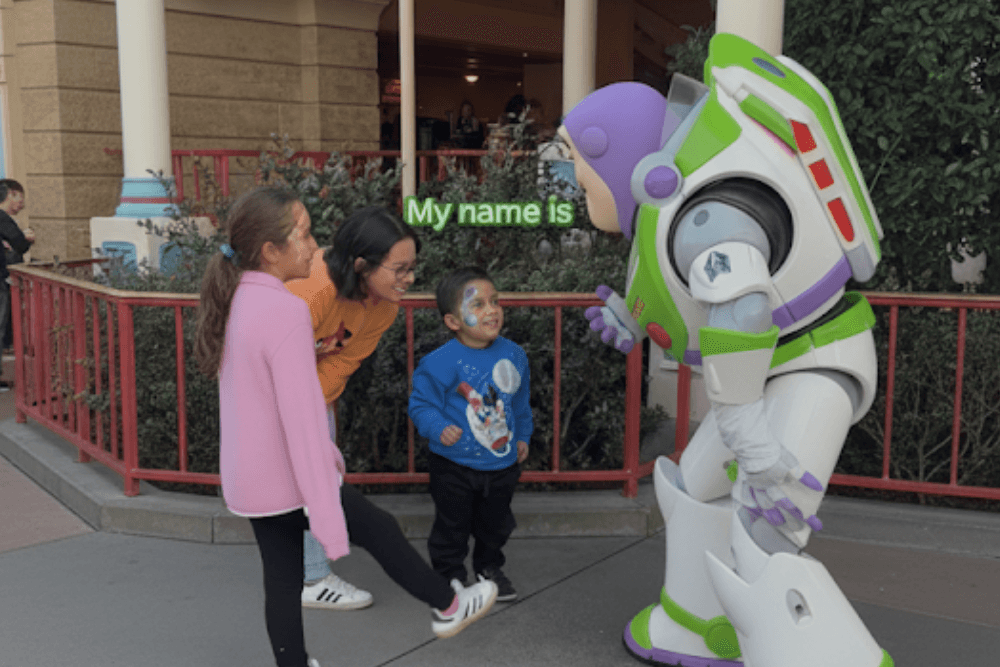The landscape of ASL accessibility continues to evolve as innovators balance cutting-edge technology with deep cultural understanding, creating solutions that truly serve the Deaf and hard-of-hearing community.
Minno Launches First ASL Bible Series for Kids
Children’s streaming platform Minno has partnered with Bridge Multimedia to debut the first-ever American Sign Language versions of Laugh and Grow Bible for Kids.
The series features native ASL storytellers presenting biblical narratives through culturally appropriate visual storytelling techniques that go beyond just translation. This approach recognizes ASL as a complete language with its own cultural nuances, particularly important when conveying spiritual concepts to young minds.
The launch impacts approximately 1 million deaf and hard-of-hearing children in the United States, many of whom have had limited access to age-appropriate religious programming in their native language. Parents and educators within the Deaf community have praised the initiative for providing families with shared viewing experiences that don’t require constant interpretation or explanation. The content will be available across Minno’s platform with options for both ASL-primary and bilingual viewing modes.
AI Ethics in Sign Language Translation Explored
An analysis examines the growing tension between artificial intelligence advancement and human interpretation in sign language translation services, highlighting both opportunities and cultural preservation concerns within the Deaf community. The discussion, featured in hearing health media, addresses the rapid development of AI-powered translation tools while questioning their ability to capture the nuanced cultural and contextual elements inherent in ASL communication.
Current AI translation systems, while achieving impressive accuracy rates for basic vocabulary and simple sentences, continue to struggle with ASL’s complex spatial grammar, cultural references, and the contextual flexibility that human interpreters provide. The analysis reveals that many AI systems still operate on English-to-ASL translation models rather than recognizing ASL as a distinct language with its own grammatical structure. This fundamental misunderstanding can lead to awkward or culturally inappropriate translations, particularly in sensitive contexts like medical or legal settings.
It emphasizes the importance of hybrid approaches that leverage AI efficiency for routine communications while preserving human expertise for complex or culturally sensitive interactions. Deaf community advocates featured in the content stress that while technological advancement is welcome, it should supplement rather than replace human interpreters who understand cultural context, regional variations, and the subtle emotional nuances that define effective communication.
Las Vegas Airport Introduces Free ASL App Service
Harry Reid International Airport in Las Vegas has launched a free ASL interpreter application service, providing on-demand remote interpretation for deaf and hard-of-hearing travelers navigating airport services and inquiries.
The service connects travelers with certified ASL interpreters via smartphone or tablet, enabling real-time communication for everything from check-in procedures and security questions to dining reservations and gate changes. Unlike previous accessibility measures that relied on written communication or family member interpretation, this technology provides professional-grade language access comparable to what hearing travelers experience naturally. The app functions throughout the airport’s terminals, including restaurants, shops, and airline service counters.
Indian Police Use Sign Language for Peaceful Protest Resolution
Law enforcement in Lucknow, India, demonstrated innovative accessibility practices by utilizing sign language communication to peacefully resolve a protest by hearing-impaired students, showcasing international approaches to inclusive public safety and community engagement. The Uttar Pradesh Police facilitated dialogue through video calls with certified sign language experts, preventing escalation and ensuring that protesters’ concerns were properly understood and addressed.
This offers valuable lessons for law enforcement agencies worldwide, demonstrating how accessibility considerations can enhance rather than complicate public safety responses. The approach aligns with international best practices for disability rights and community policing, potentially influencing policy discussions about inclusive emergency response procedures. The documentation and sharing of this successful intervention on social media platforms has garnered attention from disability rights advocates globally, highlighting the universal applicability of respectful, accessible communication approaches in tense situations.
NSF Funds Sign Language Education Technology Research
Binghamton University has received a National Science Foundation CAREER Award to advance research in sign language education technology, specifically targeting misconceptions and learning barriers that affect both deaf and hearing students in ASL acquisition programs. The five-year grant will fund development of innovative teaching methodologies that address persistent challenges in sign language pedagogy, including the tendency for hearing learners to approach ASL through English linguistic frameworks.
The research project, led by faculty in the university’s computer science and linguistics departments, aims to create adaptive learning technologies that respond to different learning styles and cultural backgrounds. A significant focus involves developing assessment tools that evaluate ASL proficiency based on the language’s own grammatical structures rather than English-influenced metrics that have historically skewed educational outcomes. The technology will incorporate motion capture and machine learning to provide real-time feedback on spatial grammar usage, facial expressions, and other crucial ASL components often overlooked in traditional classroom settings.
Community impact extends beyond technological innovation, as the research involves extensive collaboration with Deaf community organizations, ensuring that educational tools reflect authentic language use rather than academic abstractions. The project addresses documented disparities in ASL education quality, where many programs still treat sign language as a manual representation of English rather than recognizing its status as a complete, independent language with rich cultural traditions.
When Technology Meets Cultural Authenticity
The evolution of ASL accessibility reveals a shift in how organizations approach inclusive design. Rather than treating accessibility as an afterthought or simple add-on, leading innovators are recognizing that meaningful inclusion requires deep cultural understanding alongside technological advancement.
This transformation is evident across multiple sectors. Technology companies are moving beyond basic translation algorithms to embrace the linguistic complexity of ASL. Educational institutions are developing assessment tools that honor ASL’s unique grammatical structure. Media companies are creating content that speaks directly to Deaf culture rather than simply adding interpretation to existing programming.
Perhaps most importantly, these developments demonstrate the power of community-driven innovation. The most successful initiatives involve Deaf community members from the earliest stages of development, ensuring that solutions address real needs rather than perceived ones. This collaborative approach is creating a new standard for accessibility that other industries and regions are beginning to adopt.








